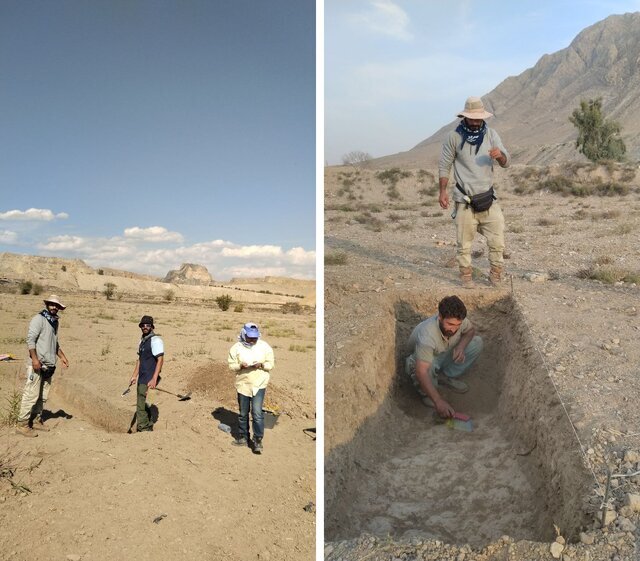Late Bronze Age discovery in southern Tehran may rewrite ancient Reys history
Late Bronze Age discovery in southern Tehran may rewrite ancient Rey’s history��
TEHRAN - Archaeologists have uncovered significant evidence of the Late Bronze Age (1900–1500 BC) during recent excavations at the ancient Rashkan fortress in Rey, marking the first discovery of its kind in the region, located south of Tehran.

The findings, led by Iranian archaeologist Qadir Afrovand, shed new light on the historical depth of the ancient city of Rey and underscore its importance for preservation and potential UNESCO World Heritage designation, ISNA reported on Sunday.
After a 17-year hiatus, this latest phase of research focused on defining the boundaries and proposing a protective perimeter for Rashkan fortress, a key site in Rey’s ancient urban center. Unexpectedly, archaeologists unearthed a two-meter-thick cultural layer containing an abundance of gray pottery shards. These artifacts, found beneath Islamic-era deposits, provide evidence of a vibrant pre-Islamic settlement associated with the Late Bronze Age.
Iranian archaeologist Qadir Afrovand noted that the discovery was both unexpected and transformative for the understanding of Rey’s history.Afrovand noted that the discovery was both unexpected and transformative for the understanding of Rey’s history. “We had encountered gray pottery fragments in surface surveys and among the debris on the fortress’s slopes, but their origins were unclear,” he explained. “This excavation has now confirmed that these materials belong to a previously unknown Late Bronze Age settlement in Rey.”
The site, spanning at least one kilometer and covering several hectares, reveals a 400-year presence during the Bronze Age. This period bridges the gap following the decline of nearby Tepe Cheshmeh Ali, another prominent prehistoric site in the region.
The discovery is especially significant as it highlights an era that has remained largely undocumented in Rey’s archaeological record. “This newly identified period rewrites part of Rey’s prehistoric timeline,” Afrovand stated, emphasizing its value for future research.
Afrovand urged Iran’s Ministry of Cultural Heritage, Tourism, and Handicrafts to prioritize the restoration and preservation of Rey, advocating for its World Heritage recognition. Once a political and cultural capital in various historical eras, Rey’s archaeological treasures have been under-explored and undervalued in global heritage contexts.
The ancient city of Rey, located near modern-day Tehran, has long been a focal point of Iranian history, known for its contributions to Persian culture and urban development. This latest discovery strengthens its case for global recognition and conservation, offering new insights into the Late Bronze Age’s role in shaping the region’s historical narrative.

Further excavations are planned to explore the extent and characteristics of this newly identified settlement, promising a deeper understanding of Rey’s prehistoric legacy, the report said.
According to Afrovand, Rey is one of the oldest cities in the central Iranian plateau with a history of human settlement that stretches over 8,000 years. As mentioned by the Encyclopedia Britannica, the history of Rey featured in the Avesta (the original document of Zoroastrianism, an Iranian religion) as a sacred place, and it is also mentioned in the book of Tobit, of the biblical Apocrypha, and by classical authors.
AM
source: tehrantimes.com